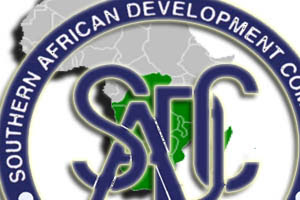



Southern African Development Community has moved as one cohesive unit since formation
THE Southern African Development Community (SADC) has moved as one cohesive unit since formation on April 1, 1980, scoring several successes, but the Zambia-Tanzania-Kenya power project is one of its kind.
The project offers huge economic potential to eastern and southern African citizens and the industrialisation drive that SADC is pushing to the dais.
This achievement is buttressed by a recently released report cataloguing the first phase of the inter-regional power links covering sections of the project in Zambia, Tanzania and Kenya.
Common Market of East and Southern Africa (COMESA) energy expert Seif Elnasr Mohamedain said the work to integrate SADC and the East African Community energy were on course and should be completed as expected by the end of 2017.
The inter-connector is widely expected to boost SADC power and the African Union’s thrust for continental integration while confining previous electricity challenges to the past.
Mohamedain said feasibility studies for the Mbeya (Tanzania)-Kasama-Kabwe (Zambia) sections of the project were nearing completion.
“This project has been taken up by the COMESA-EAC-SADC Tripartite grouping which is fast tracking the implementation process. The three blocs have managed to secure funding for the preparatory activities,” said Mohamedain, adding that COMESA was taking the lead in this effort.
This project falls within southern Africa’s efforts to ensure electricity grids of all mainland countries are interconnected while tapping into the East African network.
In an interview by phone from Swaziland, chairperson of the SADC Committee of Ministers Jabulile Mashwana, who is Swaziland Minister of Natural Resources and Energy, said progress made by SADC are top-notch when compared with other regional power pools.
Mashwana said the Southern African Power Pool (SAPP) successfully established the Short-Term Energy Market (STEM) and a competitive electricity market for SADC called the day-ahead market as part of the integration drive.
The Harare-based regional institute has upgraded the trading platform with Forward Physical Markets and the Intra Day Market. This is a clear indication that the SADC region has made great strides in strengthening energy integration and trading in the region.
With regard to interconnectors, Mashwana said the region has successfully completed 10 interconnector projects such as the 400kV ZESA Interconnector between Zimbabwe and South Africa and the 330kV Mozambique-Zimbabwe Interconnector.
“I can also mention the 533kV line between Cahora Bassa in Mozambique and South Africa, the 220kV Zambia-Namibia, the 400kV DRC-Zambia line as well as the 400kV line between Camden in South Africa via Edwaleni in Swaziland to Maputo in Mozambique. So we are doing well,” she said.
She said there were several other transmission projects in the pipeline and were currently either at the concept or feasibility stage. The projects further seek to strengthen the integration agenda.
Several barriers, however, still need to be overcome in the SADC region to unlock further investment in energy infrastructure. — Zambia Daily Mail